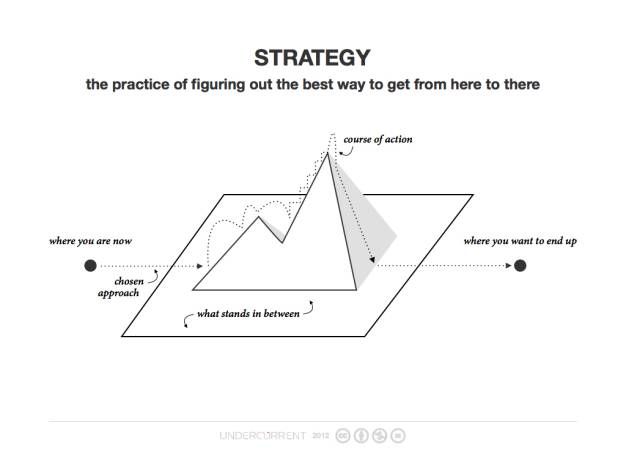If there’s a management buzzword of the moment; it’s strategy. I actually had an interview once where a clueless director asked; “yes, but what strategy is that?” over and over again. I’d mapped out the strategy but it had become very clear through the course of the conversation that the director had no idea what “strategy” meant and had confused it with “tactics” instead.
What is Strategy?
Strategy is the big picture stuff; it’s not so much the nitty-gritty of day-to-day operations but rather the overall direction. If strategy were applied to a ship it would govern the course of the craft and the objective of the sailing; it would have very little to do with how the ship was steered or what kind of cannons might be needed to protect the cargo.

Author/Copyright holder: Undercurrent. Copyright terms and licence: CC BY 2.0
UX can appear a little distant from this big picture because it deals with the details of how design must serve the user. Yet, great UX itself is surely a strategic goal.
UX and Business Strategy
In order for user experience to be on the strategic radar most UX departments are going to have to become UX evangelists. UX is such a new discipline that many mid-level and senior-level managers won’t have encountered the concept at business school or indeed in much of their ongoing professional education.

Author/Copyright holder: Rich Tennant. Copyright terms and licence: All rights reserved Img source
You can’t make something strategic if you don’t know it exists. This evangelism is going to take many different forms including:
- Promoting the concept of UX in general
- Training leaders and managers in both the theory of UX and the benefits of UX
- Aligning UX work now and in the future with the companies goals
- Ensuring that UX is an agenda item when it is relevant
Why is this important? Strategic decision makers, ultimately, have control over the direction of your business. If UX isn’t on their radar, it’s not going to be taken seriously. Making strategic decision makers happy is the job of tactical managers (those involved in the day-to-day execution of things) and if those decision makers don’t care about UX – you can be certain that the tactical management team won’t care either.
If you are going to help transition your business to one where UX forms a crucial part of the strategy (as it should) then you are going to have to keep your eye on answering the following questions:
- How can I support leaders and managers both above and below in me in the chain to articulate the importance of UX?
- Which relationships with stakeholders, leaders and other functions could bring UX the most benefit?
- What level of sponsorship will UX require and from whom in order to flourish within the business?
- How can I demonstrate that UX work currently supports the business strategy and assists in achieving the objectives set forth in that strategy?
Summary
In many organizations, even today, UX is simply not on the strategic agenda when it really should be. UX professionals are going to have to become UX evangelists to change this around. We’ll know that it’s there when UX gets a seat on the board of its own.
Header Image: Authot/Copyright holder: Alexander Osterwalder. Copyright terms and licence: CC BY 2.0











